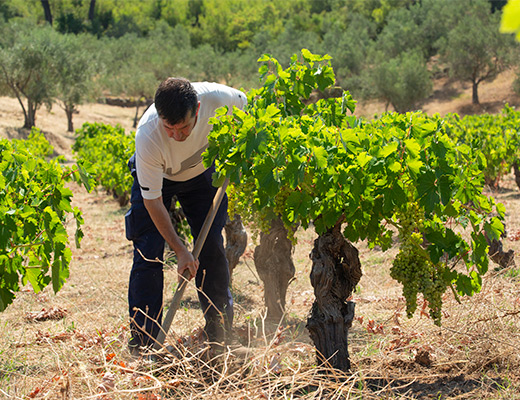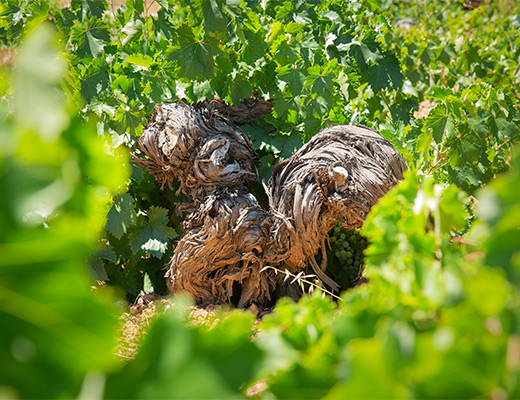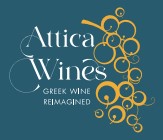Viticulture
Viticulture
The vineyard of Attiki is fractured into a multitude of small vineyard holdings which average about 0.9ha in size. The total area under vines is slightly more than 6,200 ha (Greek National Statistics – 2020) and is split among 7,000 small growers. PGI wines account for the overwhelming majority of the total production. The winegrowing area of Attiki can be divided into four major sub-regions. However, most of the vineyards (over 75%) are largely concentrated in the eastern part of the prefecture. Due to the small-scaled size of vineyard holdings, working the land can be demanding and quite expensive. However, traditionally this fragmentation over several different plots helped secure the harvest for local growers, even in difficult years, as a result of dividing the land into smaller plots among the heirs of each family.
Attiki has built its reputation on Savatiano which accounts for 89% of the total vineyard, with almost 5,500ha under production. But it is also home to a number of other grapes varieties such as Roditis, which is the second most-planted grape variety (at 2.5%). Assyrtiko is gaining popularity, however, but still accounts for only a small proportion of the plantings (at 2%), followed by Malagousia (at 1.3%). In relation to red grapes, Cabernet Sauvignon is first with 1% of the total vineyard, followed by Merlot, Syrah and Agiorgitiko.
Although there is some diversity found in Attiki, in actuality, 95% of the total plantings are represented by white grapes, with most of that Savatiano.


A key attribute of Savatiano is its prolific character, especially when planted in flat, fertile and heavily irrigated soils. However, quality-minded producers are trying to restrict the yields in order to turn a simple, refreshing, easy drinking wine into a fine wine with ageing potential.
Old vines, manually worked vineyards and small viticultural zones are among the key characteristics of Attiki. The climate is hot and dry, with minimal rainfall, especially during the growing season. This kind of climate provides healthy grapes, at low risk from disease which minimizes the need for chemical spraying. The vineyard of Attiki is suitable for organic cultivation.
Old vines are extremely important in Attiki. Most of them are gobelet-trained in order to overcome the dry and hot climatic conditions. These plants are extremely resistant and perfectly adapted to the local terroir. In areas such as Mesogaia, there are still many post phylloxera plantings still in production. These grapes were initially planted in the late 1950s. They represent the unique ampelographic heritage for the region. The lack of water and the poor limestone soils force the roots of these vines to go deep into the subsoil in order to cover their needs in water and nutrients. Although, the yields are restricted to 28-35hl/ha, the resulting wines are concentrated, full of minerals, with great ageing potential.
On the other hand, the PGI Slopes of Kithaironas (ΠΓΕ Πλαγιές Κιθαιρώνα) includes a very different landscape. Here someone can find large vineyard plots of younger vines. Cultivation is easier and more economically viable, than in Mesogaia. In the northern part of the region of Attiki, there is a combination of old bush vines as well as linear trained plantings.
